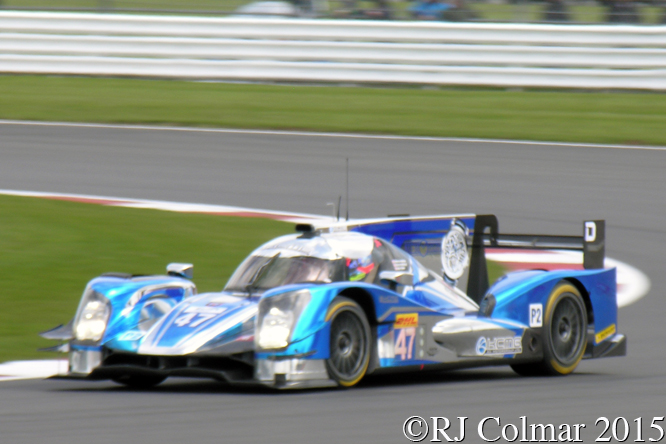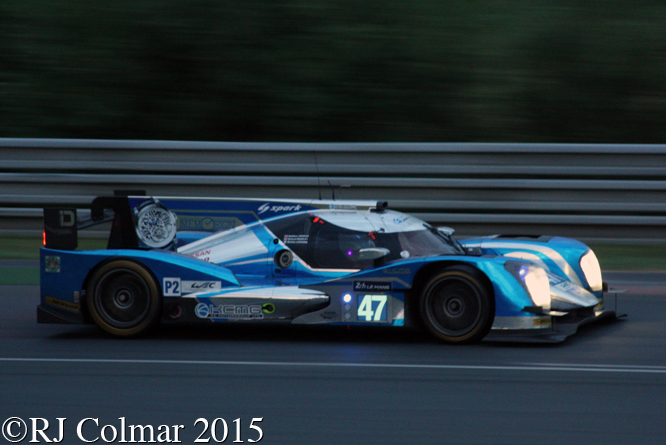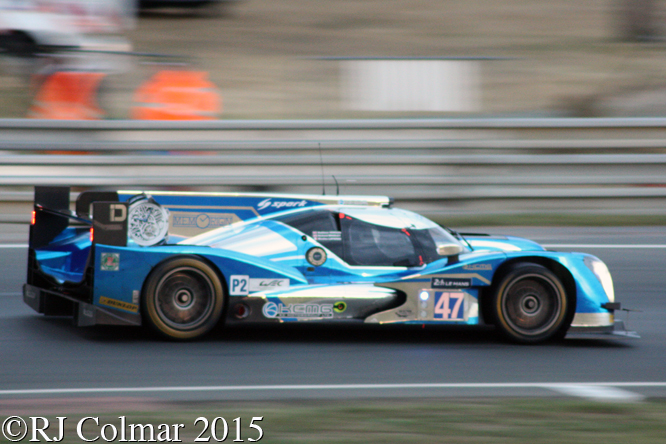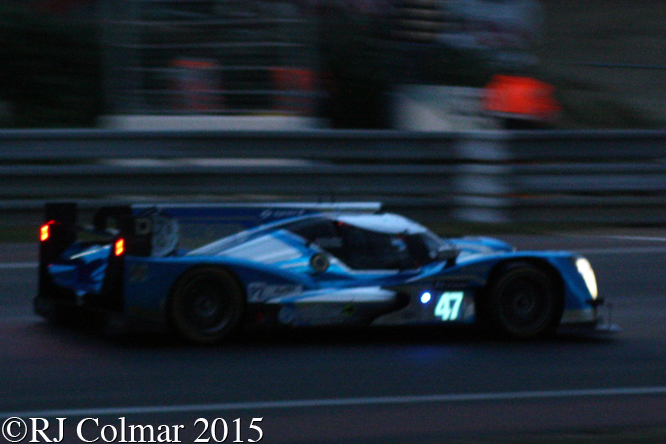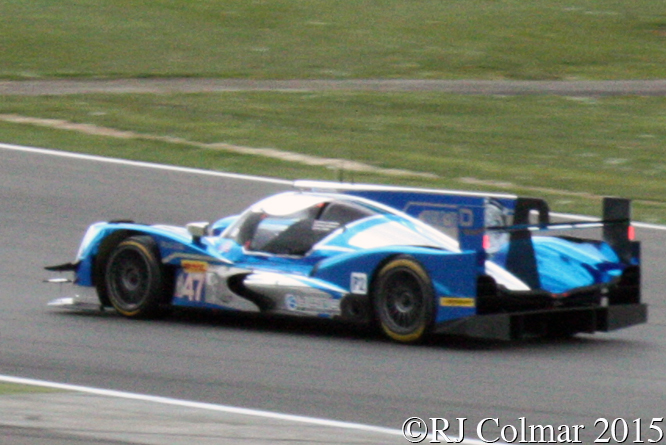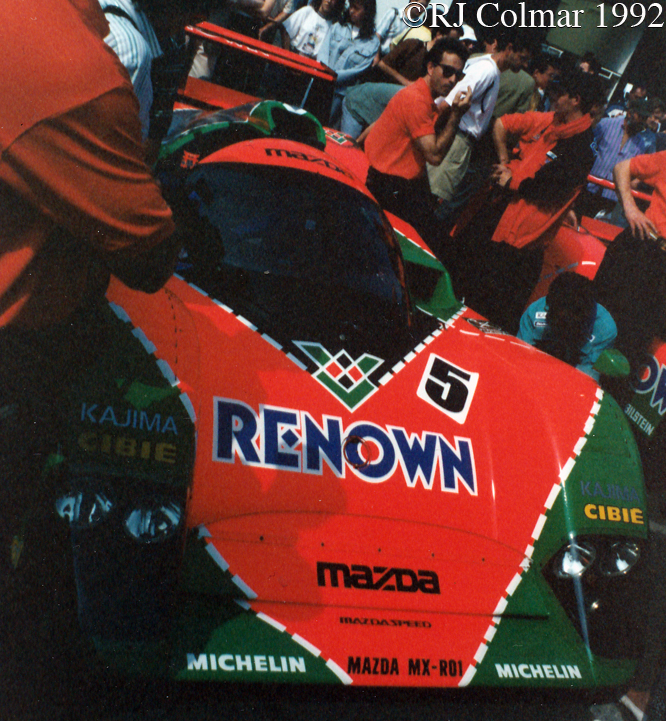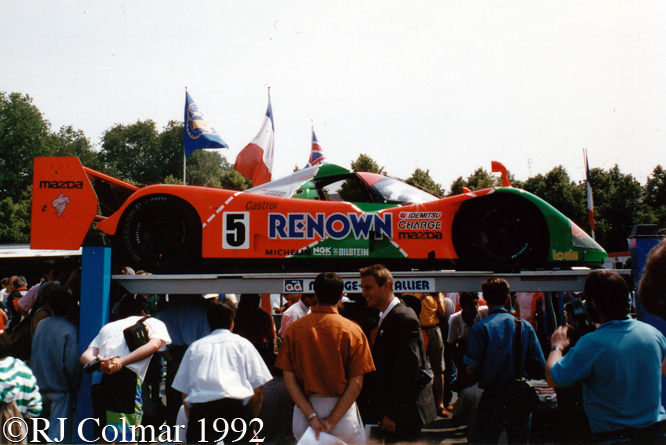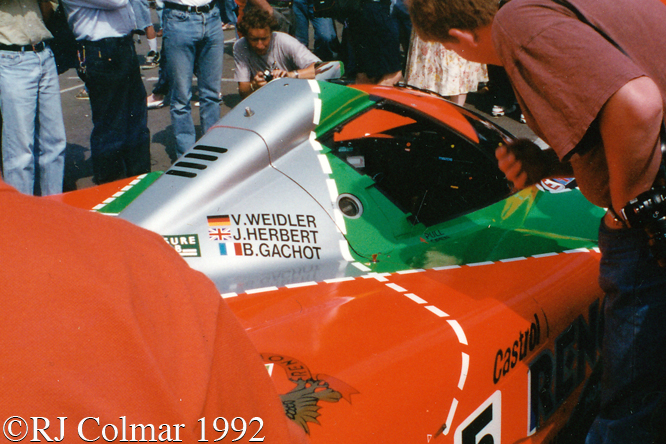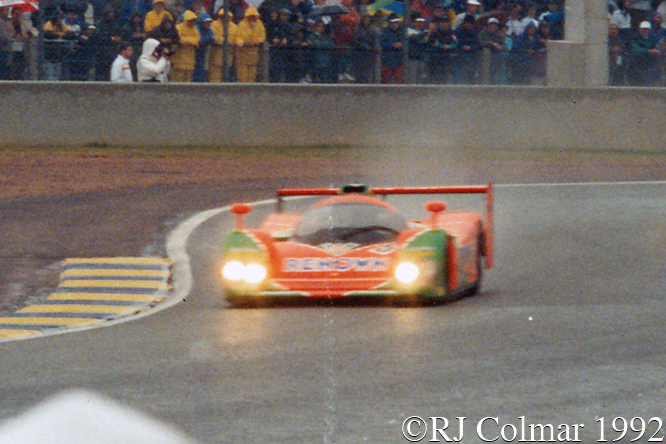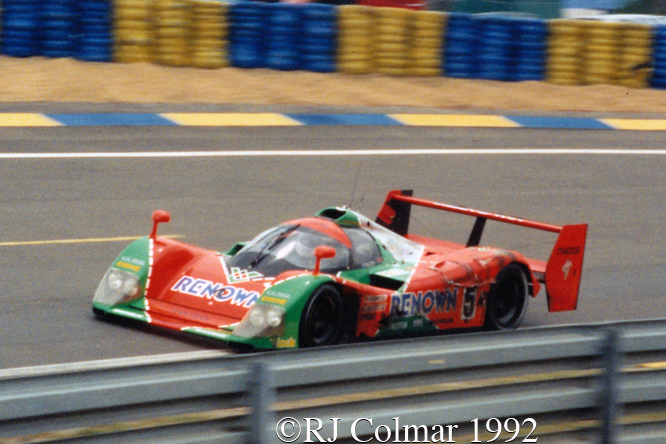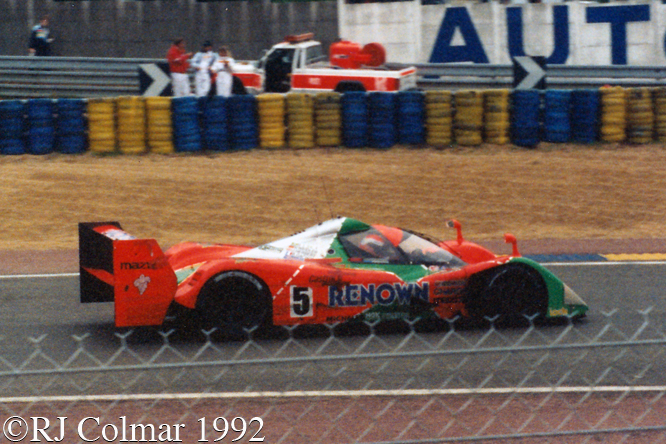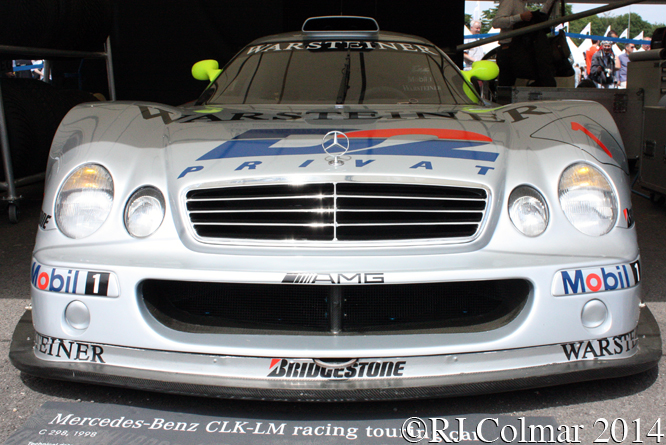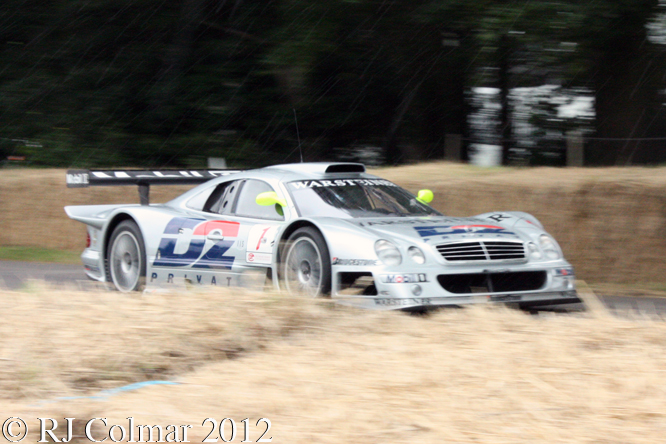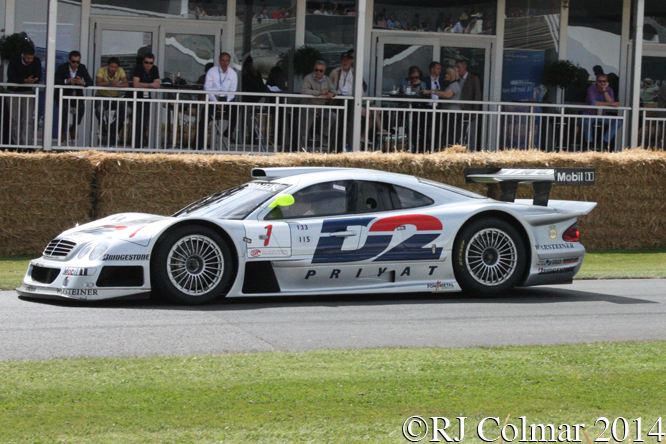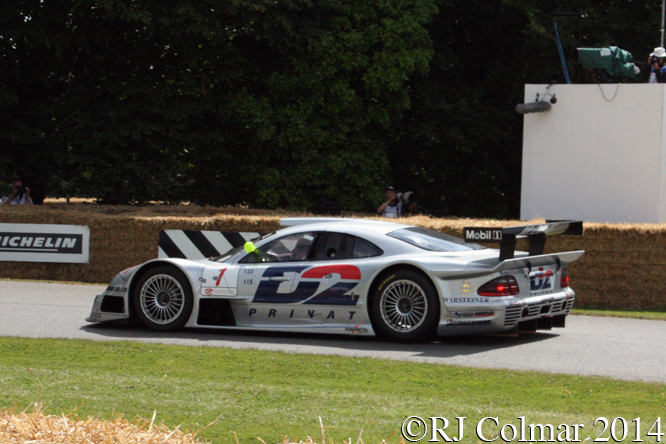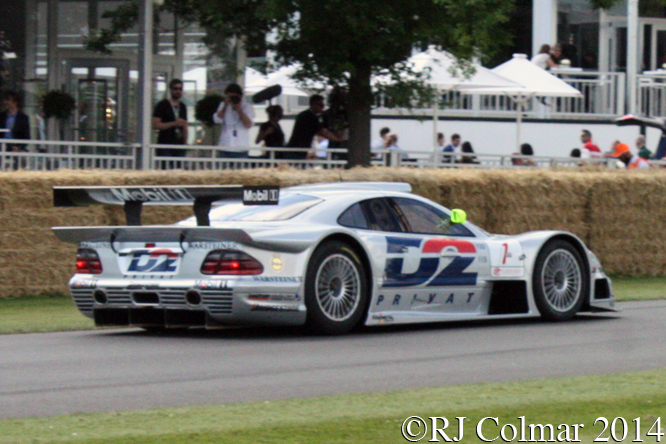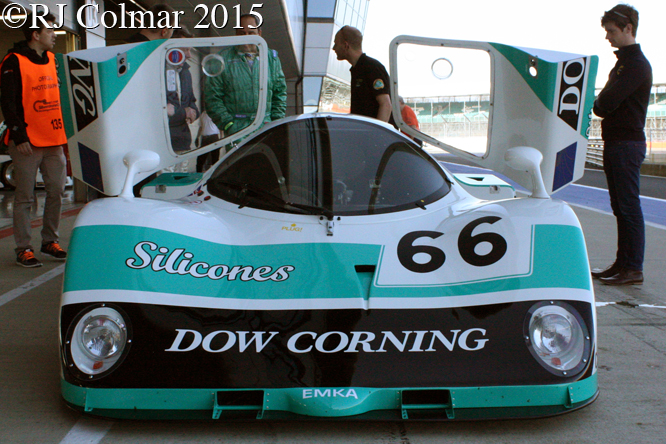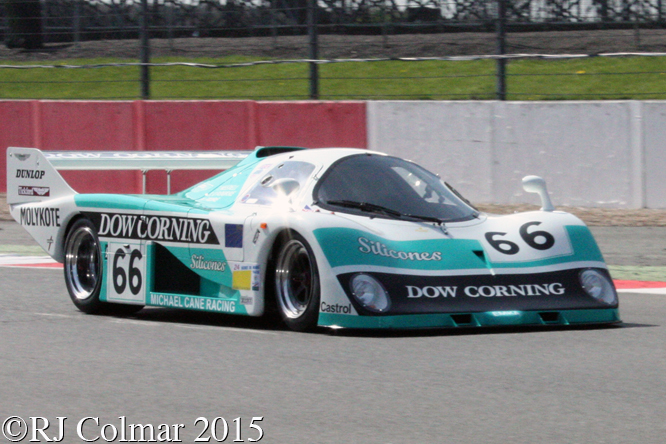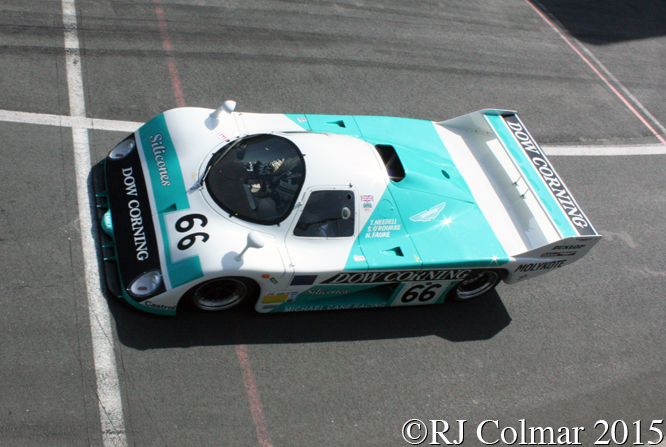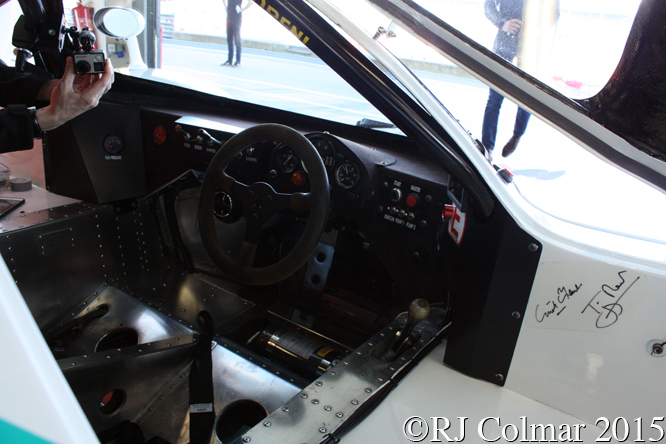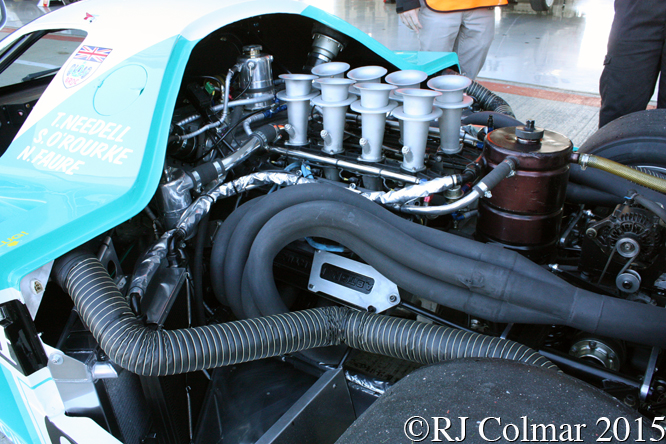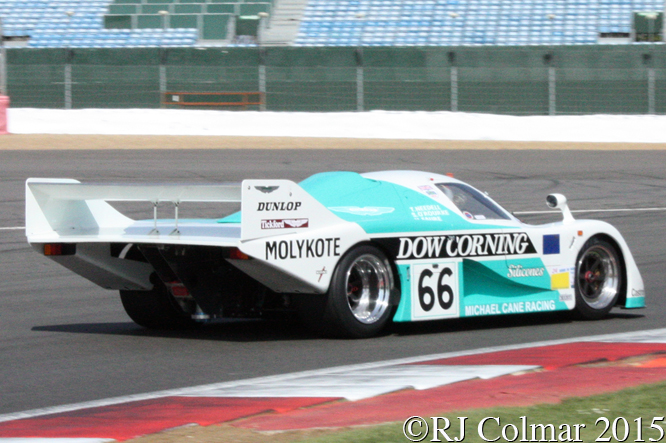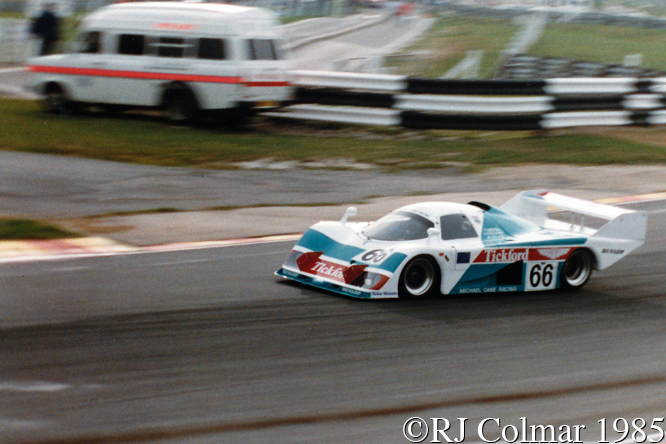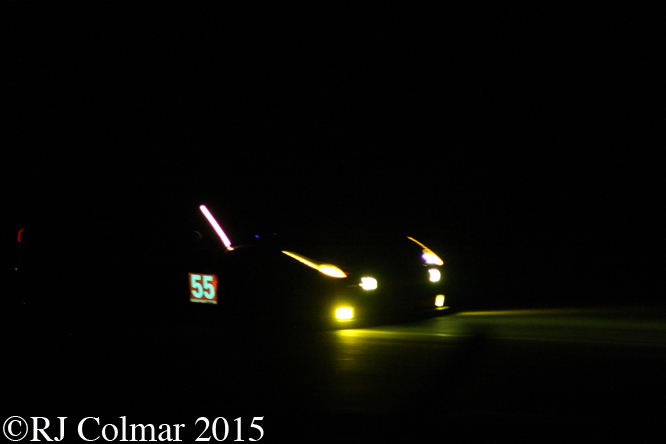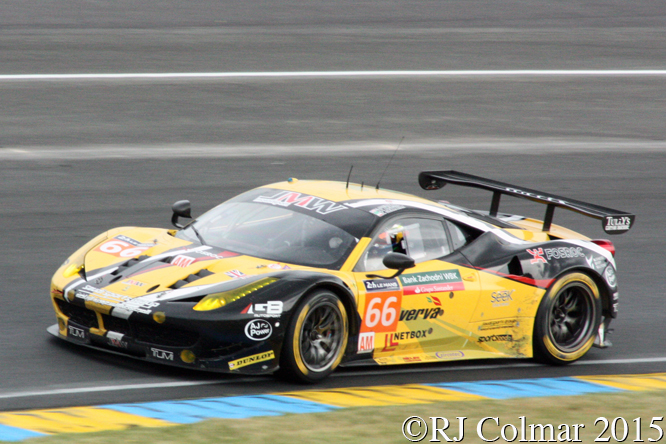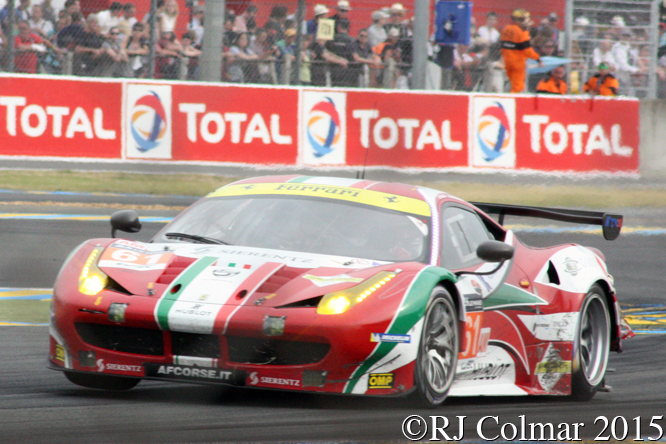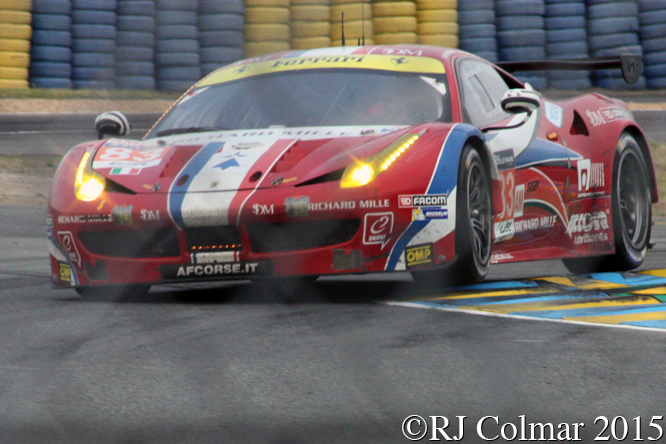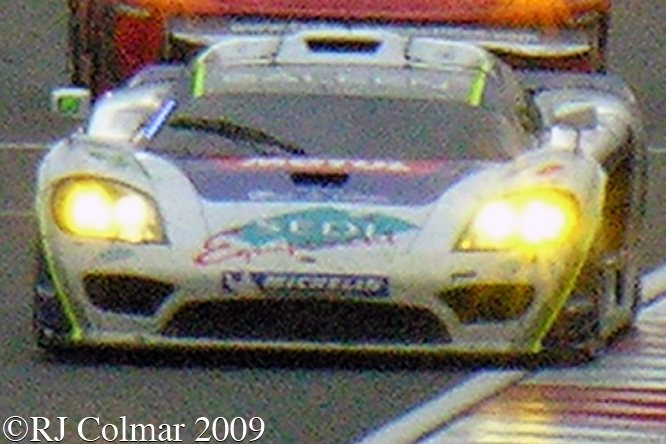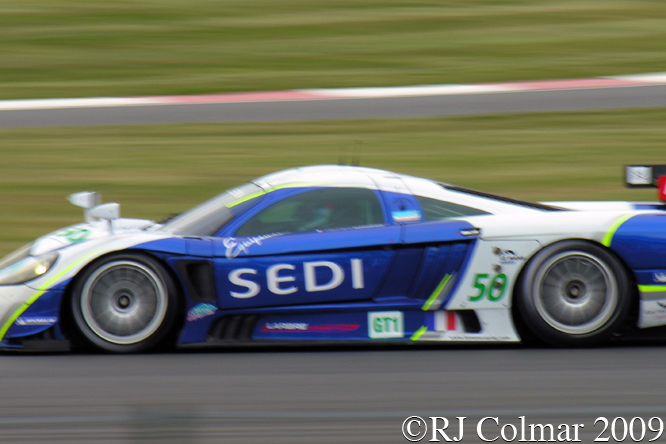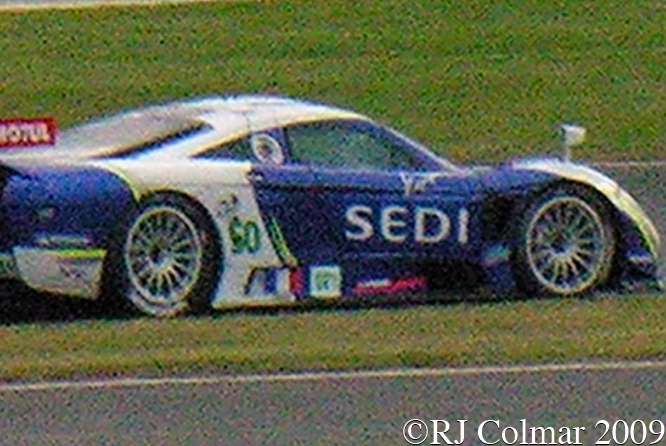This years Le Mans 24 Hours race was probably won when someone at Porsche decided that this years 919 Hybrid challenger needed to be upgraded from last years 6MJ class to run in the 8MJ class, evidence of this was first hinted at by the 919’s performance on the Hangar Straight at Silverstone earlier in the year.
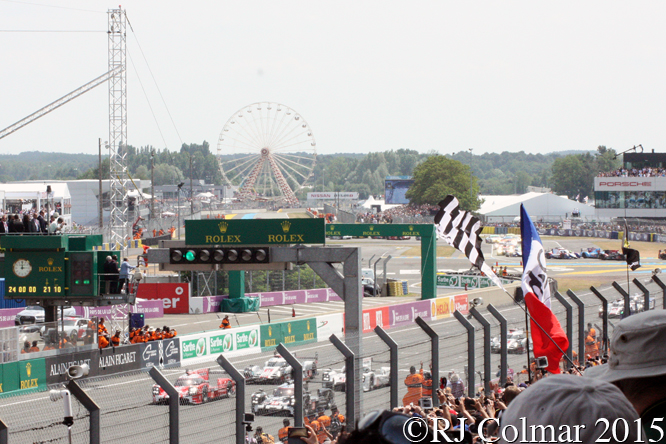
Qualifying this year was a simple affair, the three Porsche 919 Hybrids locked out the first three places with the #18 car of Marc Lieb, Romain Dumas and Neel Jani on pole after setting a blistering pace with a time of 3m 16.887s in the opening qualifying session, next came the three Audi R18 e-tron quattro’s with the #8 driven by Loïc Duval, Lucas di Grassi and Oliver Jarvis starting 4th followed by the two Toyota TS040 Hybrid’s who’s #2 driven by Alexander Wurz, Stéphane Sarrazin and Mike Conway started 7th, the first seven cars are seen above taking the prompt 3pm start of the race.
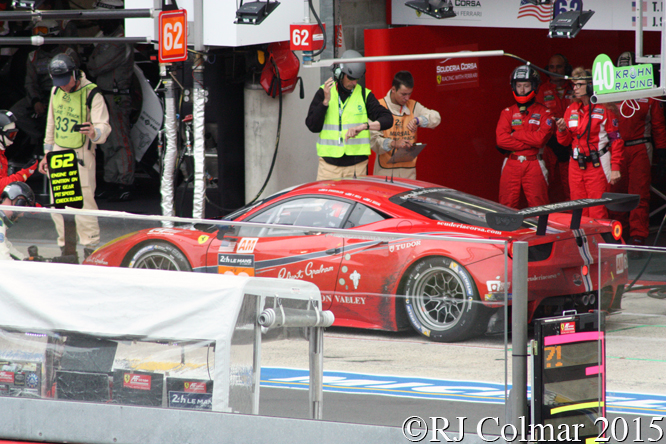
The American entered Scuderia Corsa #62 Ferrari 458 Italia GT2 of Bill Sweedler, Townsend Bell and Jeff Segal looked set for a fourth place finish in the GTE Am class at it’s final pit stop seen above. Then with less than an hour to go long time GTE Am leader and class pole starter Paul Dalla Lana inexplicably shot across the kitty litter at the Ford Chicane and hit the wall so hard as to retire his #98 Aston Martin Vantage V8 from the race instantly, fortunately without injury to the driver, all of which promoted all those behind him up one place in class meaning the #62 finished third in GTE Am, and 24th overall from 51st on the grid.
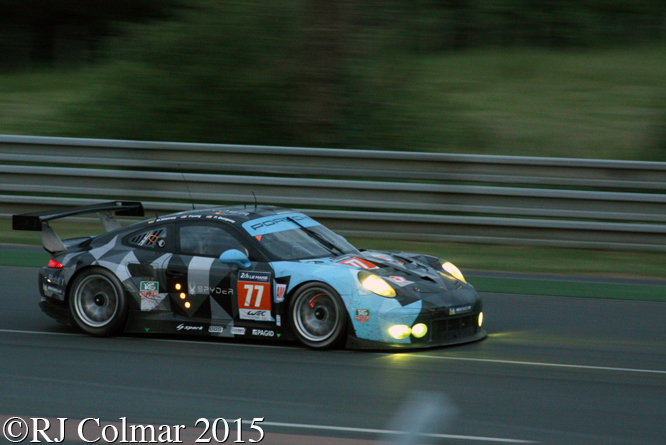
A popular second in the GTE Am class after fending off the #62 Scuderia Corsa Ferrari was the #77 Dempsey-Proton Racing Porsche 911 RSR driven by Patrick “Grey’s Anatomy” Dempsey, Patrick Long and Marco Seefried seen approaching the Porsche curves above on it’s way to a 22nd place overall finish from 47th on the grid.
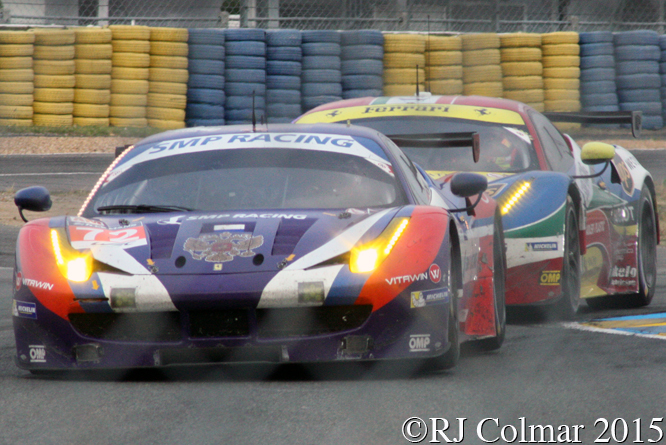
After the retirement of the #98 Aston Martin the #72 Ferrari 458 Italia GT2 shared by Viktor Shaitar, Aleksey Basov and Andrea Bertolini only had to avoid beaching itself in the gravel as it had done at Indianapolis earlier in the race to score a first Le Mans class win for a Russian entrant, the SMP Racing #72 Ferrari is seen at the Dunlop Chicane on the Saturday evening as it headed for a 20th place finish overall from 43rd on the grid.
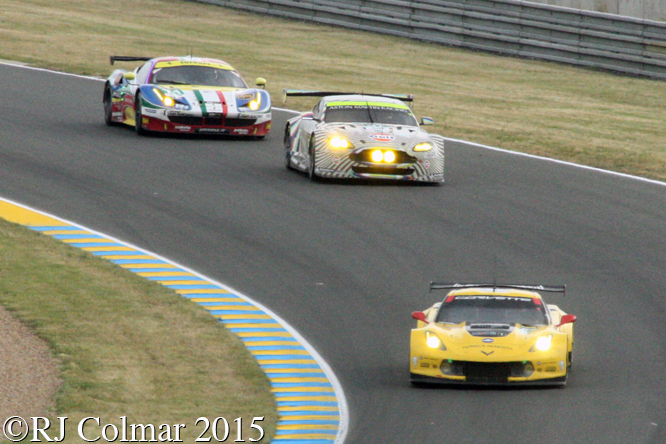
5 hours into the race the three leading GTE Pro runners were still racing nose to tail, above the #64 Corvette CR.7 is seen above being chased by the #97 Aston Martin and #51 Ferrari through the Chapel Descent.
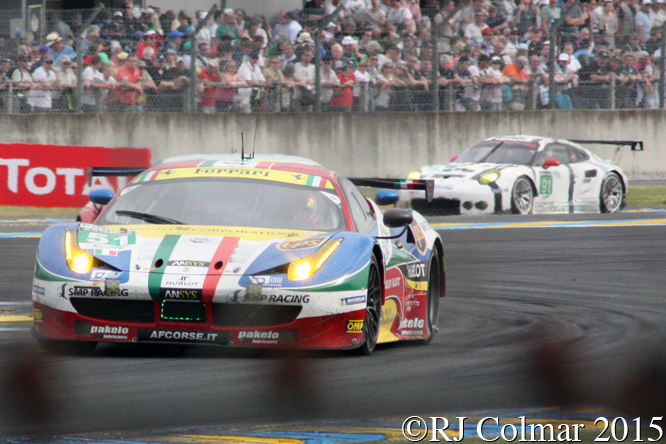
Unfortunately the #97 Aston Martin shared by Darren Turner, Stefan Mücke and Rob Bell retired after the latter damaged the oil feed on a kerb after completing 110 laps, this left the AF Corse #51 Ferrari 458 Italia GT2 shared by Gianmaria Bruni, Giancarlo Fisichella and Toni Vilander to recover from a fifth hour puncture and challenge the #64 Corvette with 2 hours to go. An hour later the #51, seen above at Dunlop Chicane, pitted with a gearbox problem and returned to the track after a 30 minute break to hold on to a third in GTE Pro and 25th place overall from 35th on the grid.
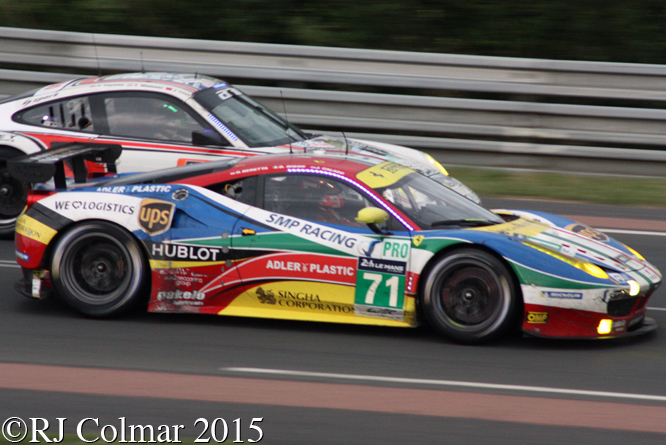
Davide Rigon, James Calado and Olivier Beretta finished 2nd in the GTE Pro class, 21st overall, from 54th on the grid after a qualifying penalty was applied, having dropped out of contention for the class lead when the alternator on the #71 AF Course Ferrari 458 Italia GT2 was replaced at the cost of four laps.
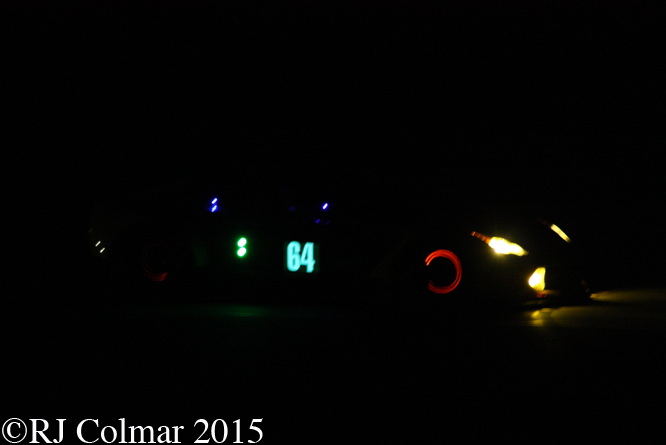
Despite being the slowest GTE Pro car to qualify and starting from 43rd on the grid the works Corvette Racing-GM C7.R driven by Oliver Gavin, Tommy Milner and Jordan Taylor came through to win the class and finish 17th overall 5 laps ahead of it nearest rival. The car proved to be bullet proof reliable and comfortable enough to drive at a pace that always kept it in contention if not ahead of the GTE Pro pack.
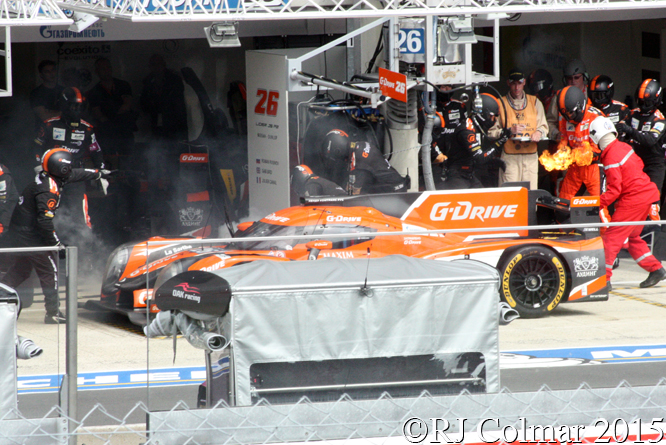
Starting from 12th on the grid, 2nd in the LMP2 class, the last thing Sam Bird needed on his first pit stop was for his G-Drive Racing #26 Nissan powered Ligier JS P2 to catch fire along with the gloves of one of his mechanics as seen above. After the fires were quelled without injury, Sam with team mates Roman Rusinov and Julien Canal ran 2nd in class until they were demoted to 3rd in LMP2 during the 23rd hour of the race, where they remained finishing 11th overall.
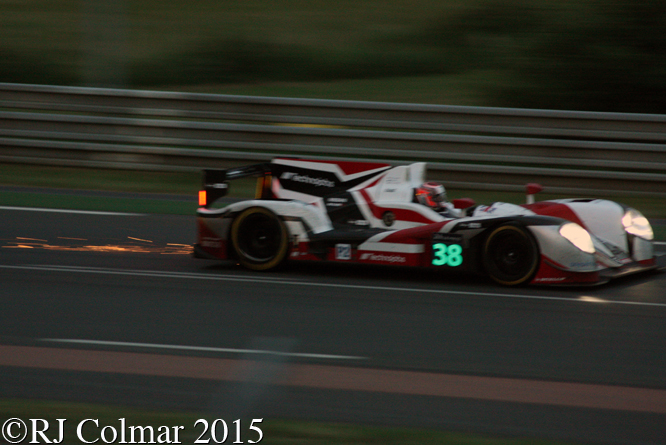
Fastest LMP2 car in the race belonged to the Jota Sport, who’s Gibson 015S, formerly known as a Zytek when it won the LMP2 class last year, driven by Simon Dolan, Oliver Turvey and Mitch Evans, lost three laps to a sensor change before the trio completed the come back drive of the race to finish, just 48 seconds adrift of this years LMP2 winners, in 10th place overall from 14th on the grid.
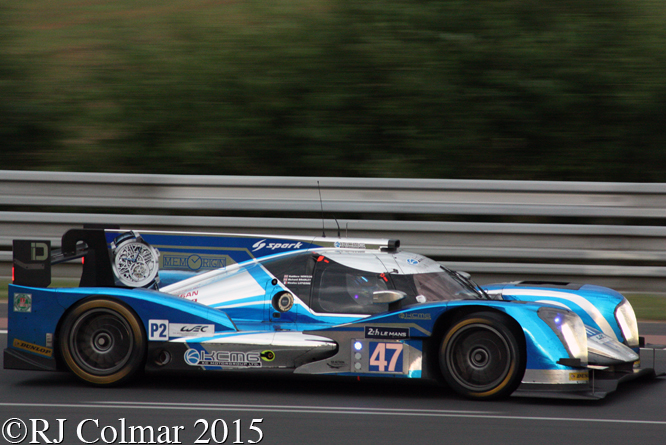
Similarly Nissan powered as the 2nd and 3rd place LMP2 class finishers the Hong Kong based KCMG team’s new #47 Oreca 05 coupé is built to the LMP2 regulations mandated for 2017, drivers Matthew Howson, Richard Bradley and Nicolas Lapierre started from class pole and 11th on the grid. Apart from a drive through penalty for a pit lane infringement, a stop to fix a dicky illuminated number the car should have comfortably won it’s class, but two kitty litter excursions at the Mulsanne and Indianapolis corners on Sunday meant the three top LMP2 cars all completed 358 laps, with the #47 9th overall.
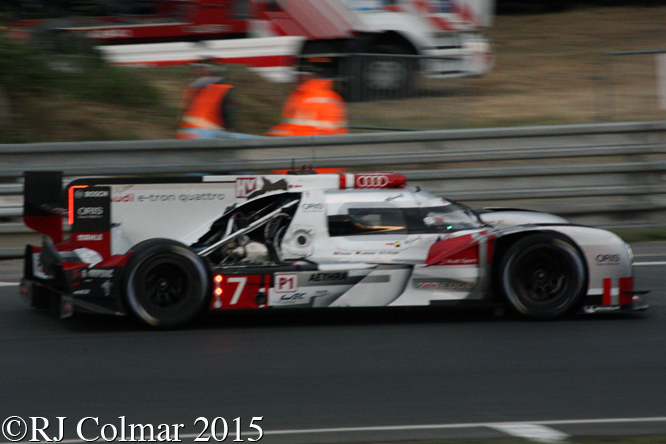
From fifth on the grid André Lotterer showed his hand early by passing two Porsche 919’s for the lead on the same lap after the first safety car period, however in the third hour team mate Benoît Tréluyer suffered a puncture and then glanced the barriers at Tetre Rouge handing the advantage back to the two leading Porsche’s. Further troubles for the Audi Sport Team Joest #7 Audi R18 e-tron quattro manifested themselves when a part of the rear body work flew off, as seen above, when Marcel Fässler was at the wheel 16 hours into the race four hours before the car received a drive through penalty for a slow zone misdemeanor. Then 21 hours from the start André set the fastest race lap, 3m 17.475s, and thereafter unscheduled stops for more bodywork repairs and oil were insufficient to prevent the car from finishing on the third, just two laps down on the winning car.
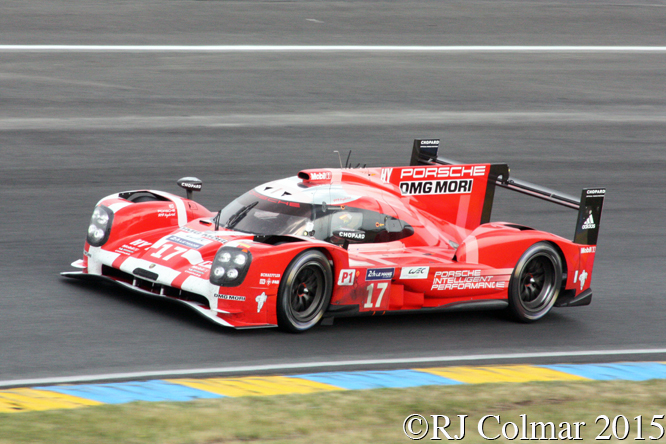
The #17 Porsche 919 Hybrid driven by Timo Bernhard, Brendon Hartley and Mark Webber starting from second on the grid was the early leader of the race and despite giving up the lead temporarily to André Lotterer’s Audi it maintained the advantage if not always in the lead until midnight when the car was penalised for slow zone misdemeanor by Brendon Hartley with a stop go penalty that handed the advantage to the sister #19 919 Hybrid. The #17 could not keep pace with it’s sister through the night and eventually finished 1 lap down in 2nd place at the finish despite spending the least amount of time, 29m 42.060s, in the pits of any competitor.
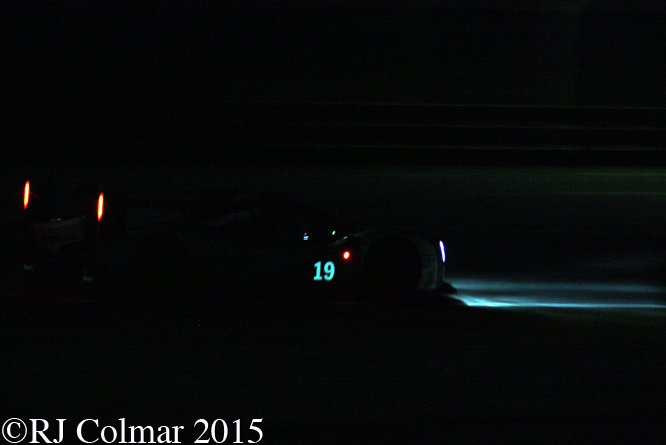
Starting from third on the grid the #19 driven by Le Mans novices Earl Bamber and Nico Hülkenberg sharing with two time LMP2 Le Mans starter Nick Tandy, performed better than all the others during the cooler night time conditions so that, even with a 10 second delay due to an overcrowded pit and a brief visit to the garage during a safety car period to repair some damage incurred by Nico after he tapped a back marker, the #19 was able to comfortably lead the #17 over the finish line just three laps short of setting a record distance for the event.
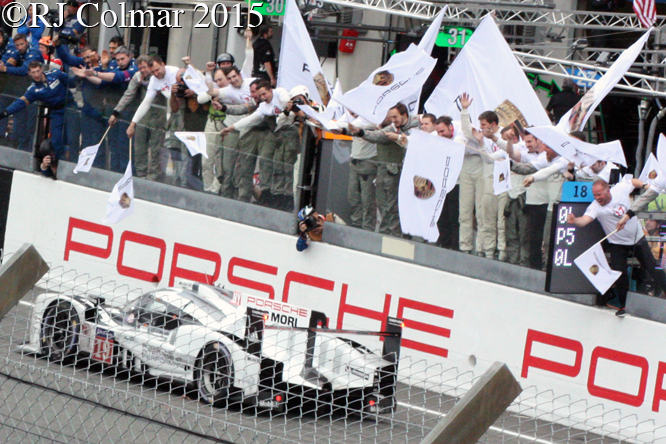
The decision to run in the 8 MJ class benefited Porsche not only with consistently better top speeds on the long Mulsanne Straight, but also with a superior fuel consumption that over the 24 hours was estimated to have handed Porsche a 2 and half minute advantage over Audi thanks to four seconds saved per fuel stop.
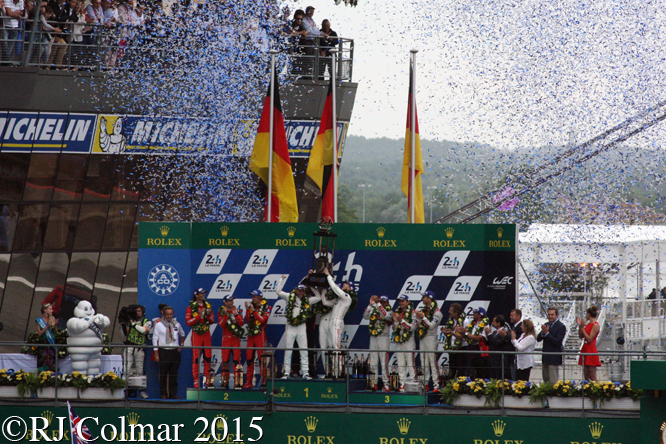
By winning this race Porsche, who last won the race in 1998, can now claim a record 17 Le Mans wins, four more than Audi, but more importantly the victory has proved the technology which sits in it’s 918 Spyder road cars that cost upwards of UK£750,000 / US$850,000.
Special thanks to my school friend Tom for getting me to the race for the first time since 1992.
Thanks for joining me on this “When The Going Gets Cool” edition of “Gettin’ a li’l psycho on tyres” I hope you will join me again tomorrow when I’ll be looking at a US Le Mans challenger. Don’t forget to come back now.

